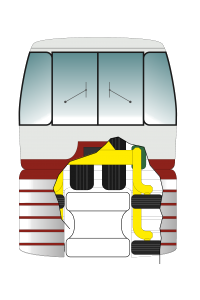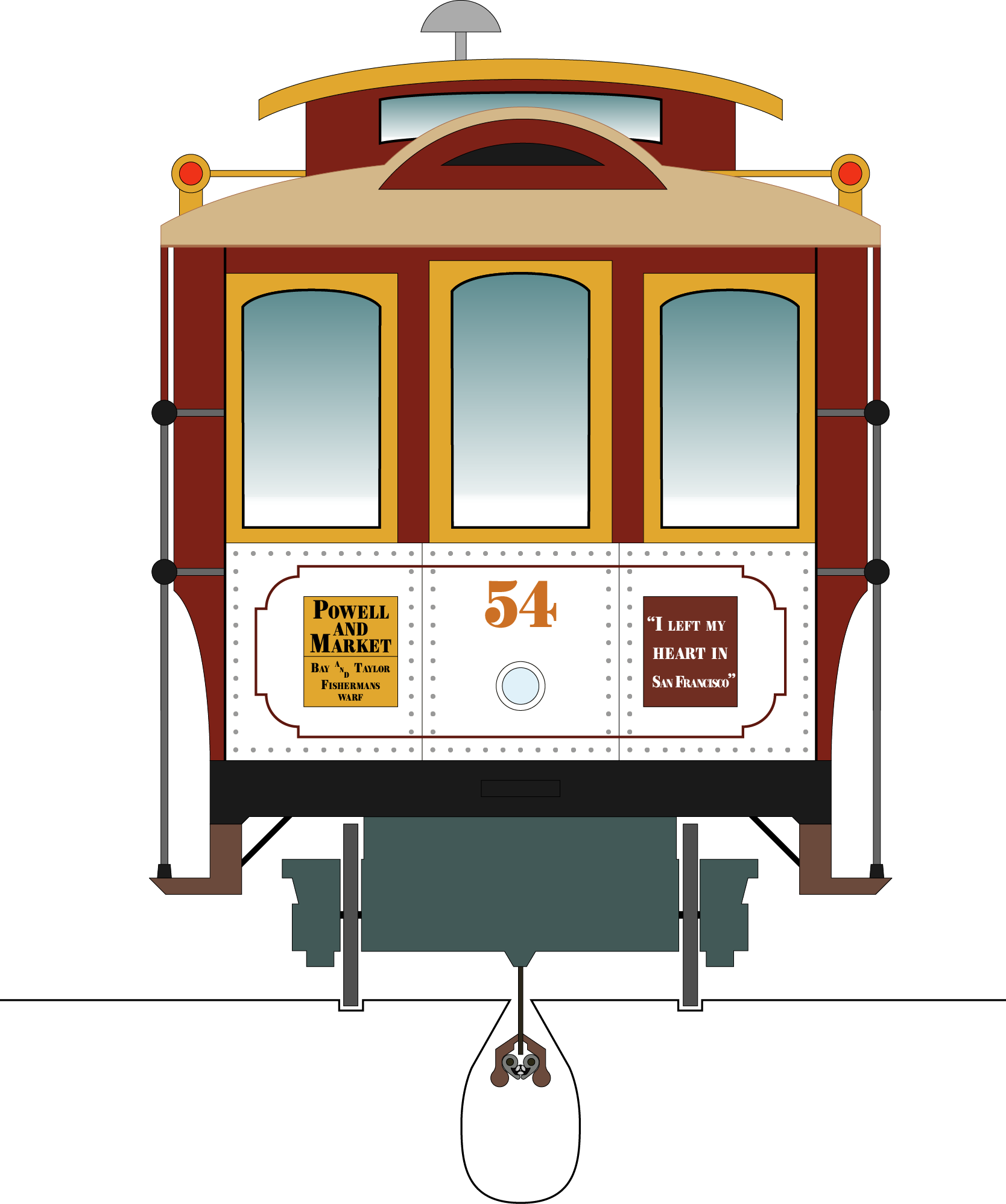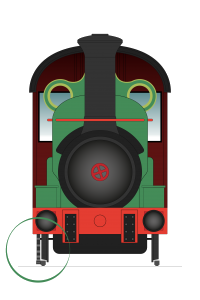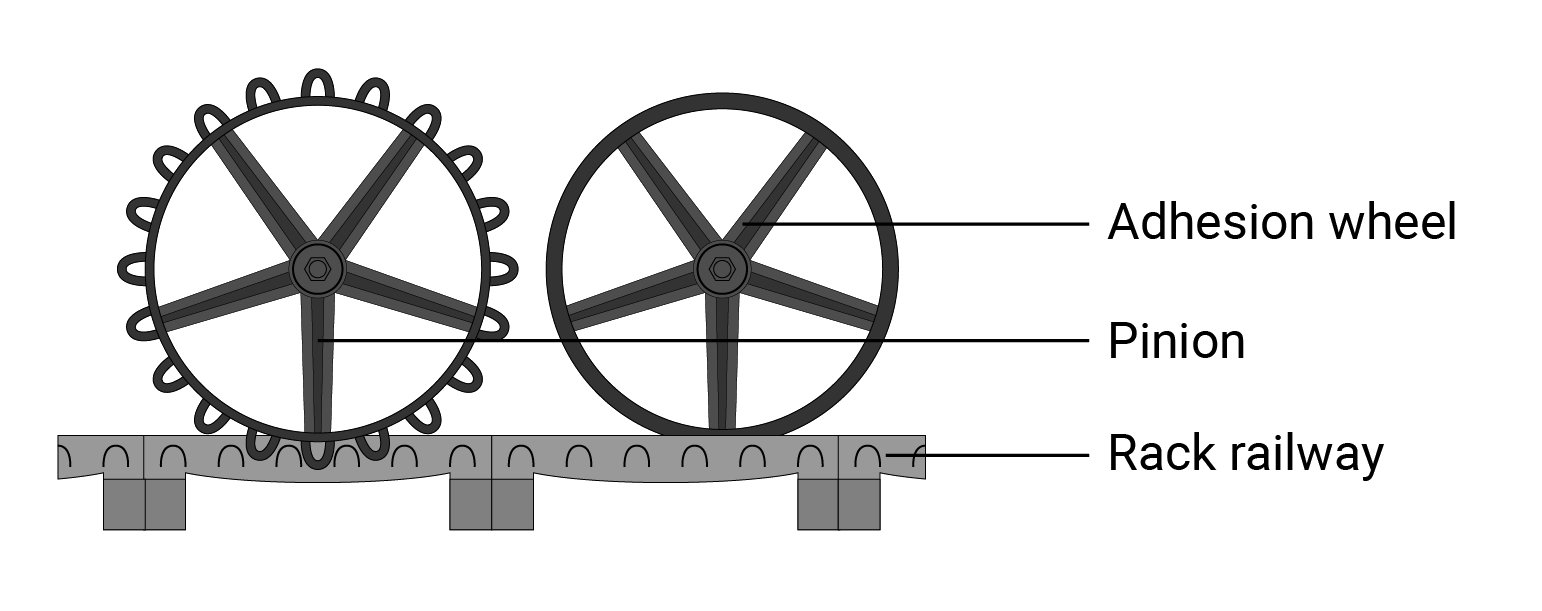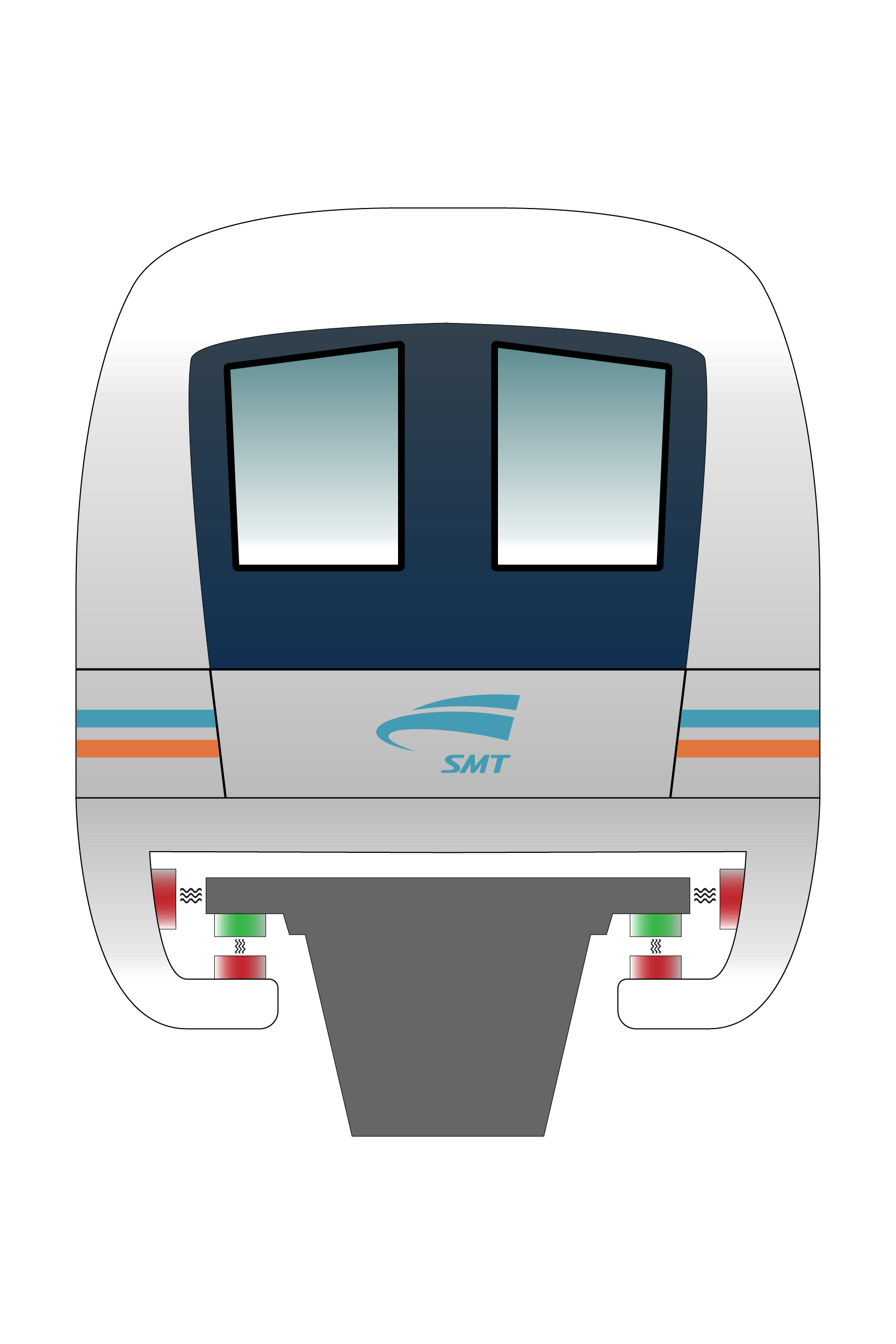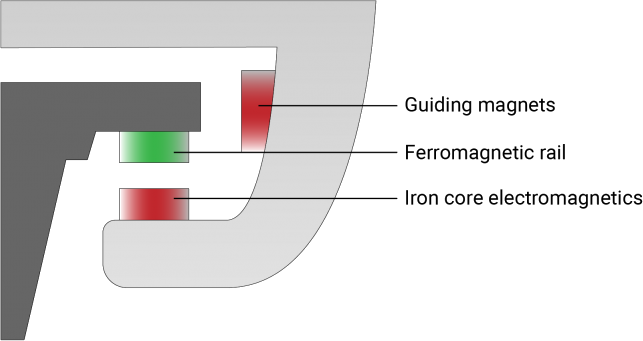6.2.1 to 6.2.7
Course subject(s)
6. Future and Special Systems
Special Systems
6.2.1 Introduction special systems
While the conventional railway system of using trains on steel tracks is an excellent way to travel longer distances within and between cities, for some occasions, different types of railway systems might be a better solution. For instance, they might be faster, cheaper, safer or require less maintenance.
Monorails, for example, are a popular for smaller distances within a city. Consider the famous San Francisco cable car, which has a unique system to cope with the hilly areas in the city – this is just like mountain railways that need a special system to ride on steep grades above 7 to 10%. Or think of the Maglev train in Shanghai, the fastest commercial high-speed electric train, which uses its ability to transport passengers to and from the Pudong International Airport. In this unit, each special system will be further explained, but first a short evaluation of each is given, answering why certain systems were developed, and why they are still used nowadays.
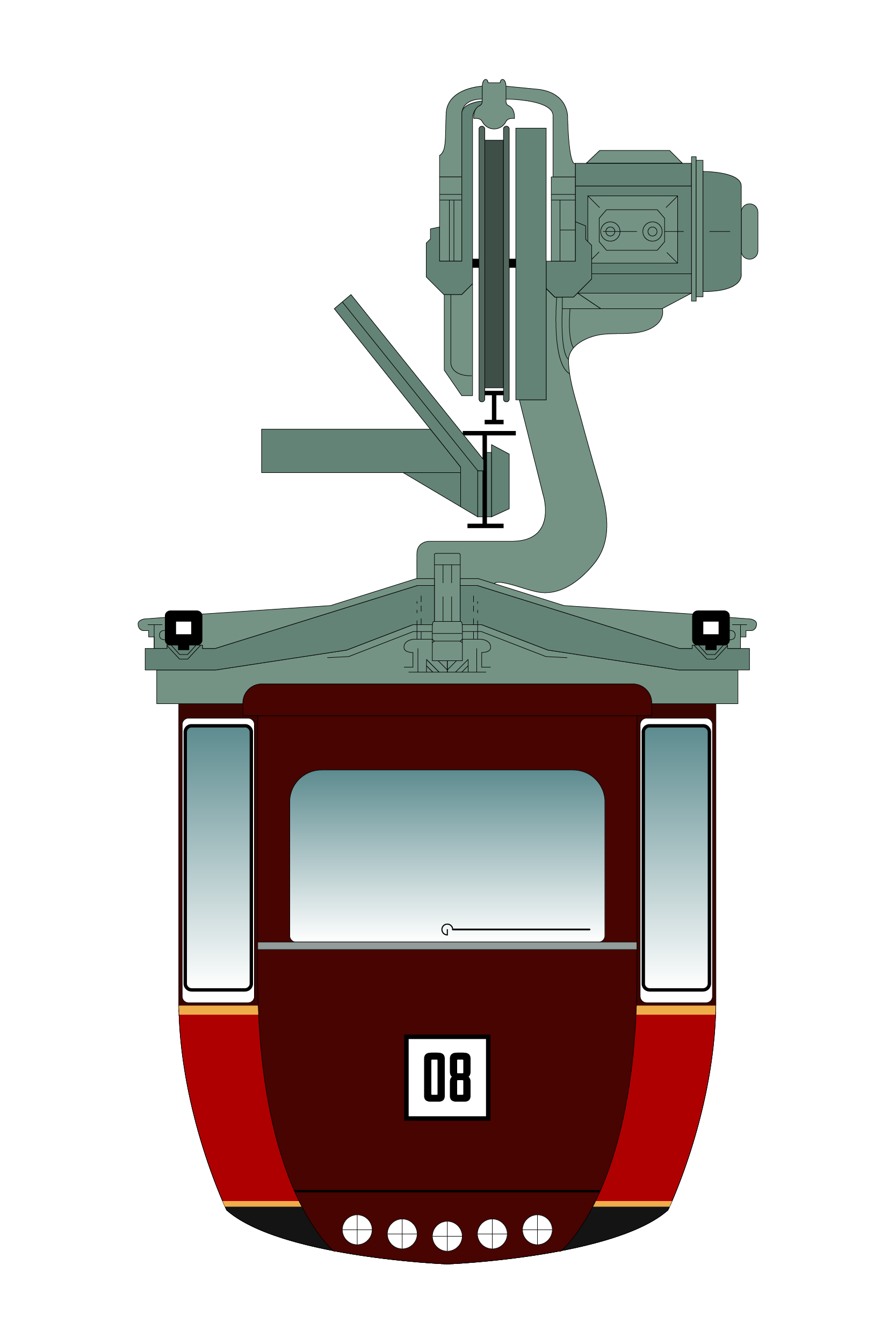 |
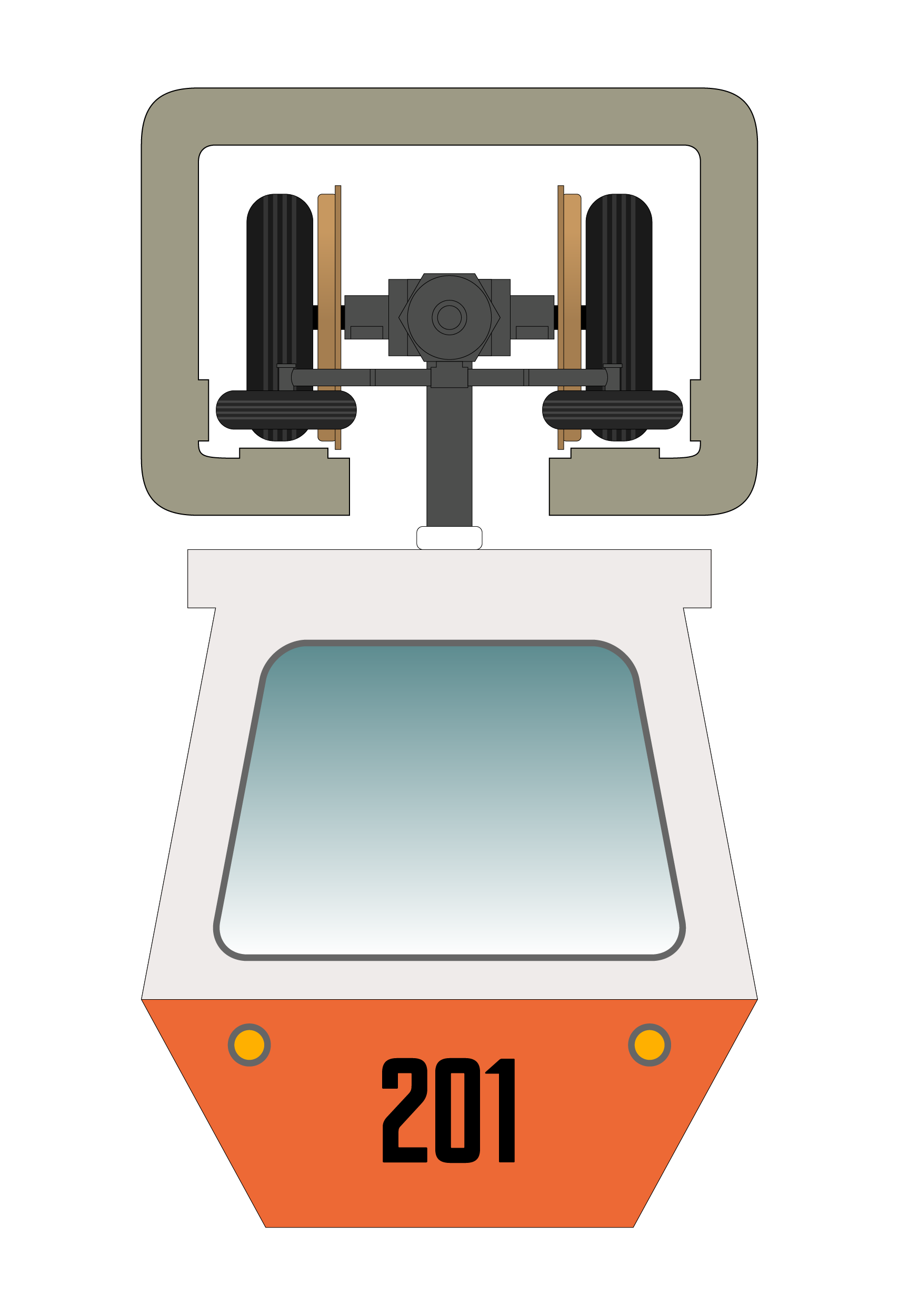 |
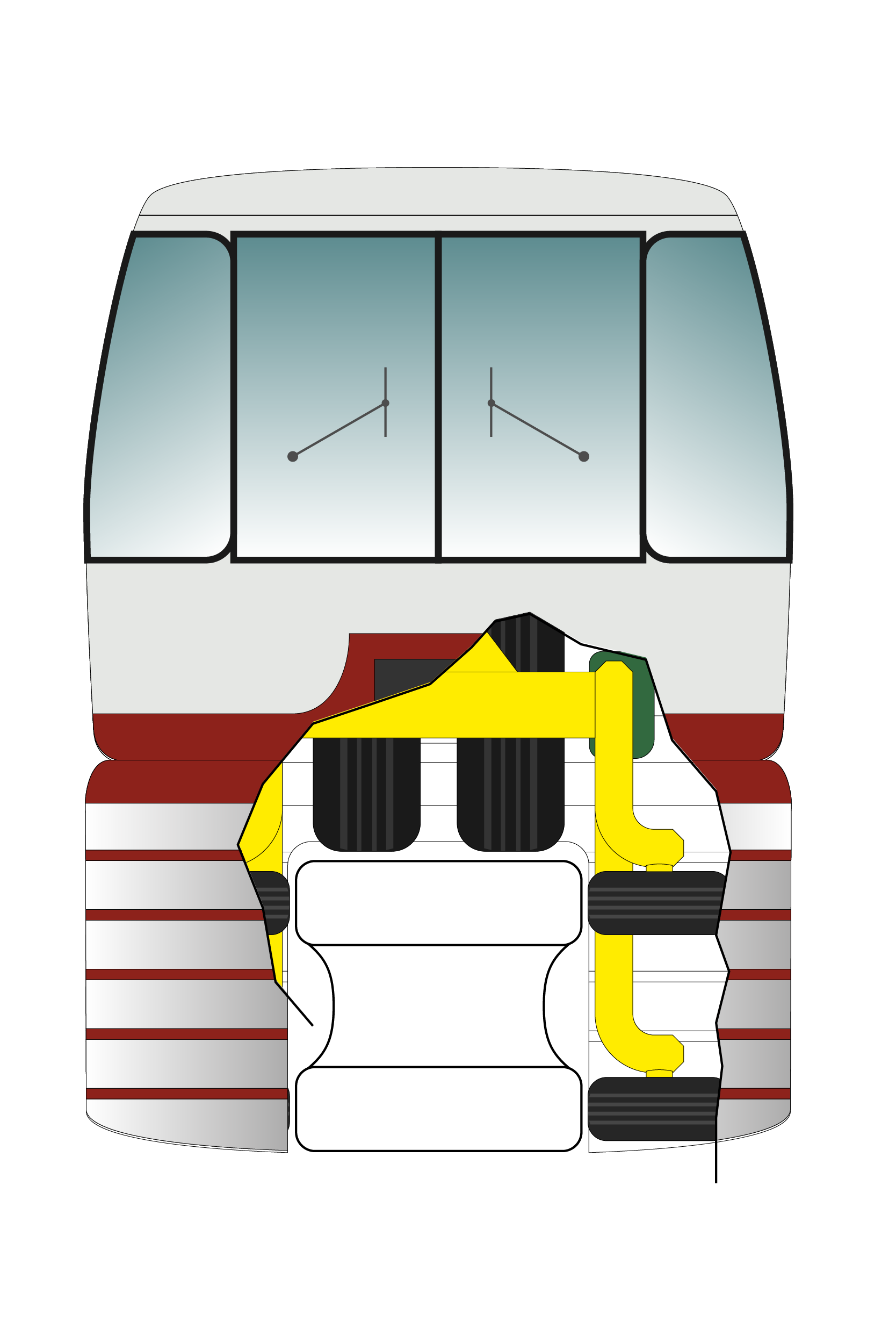 |
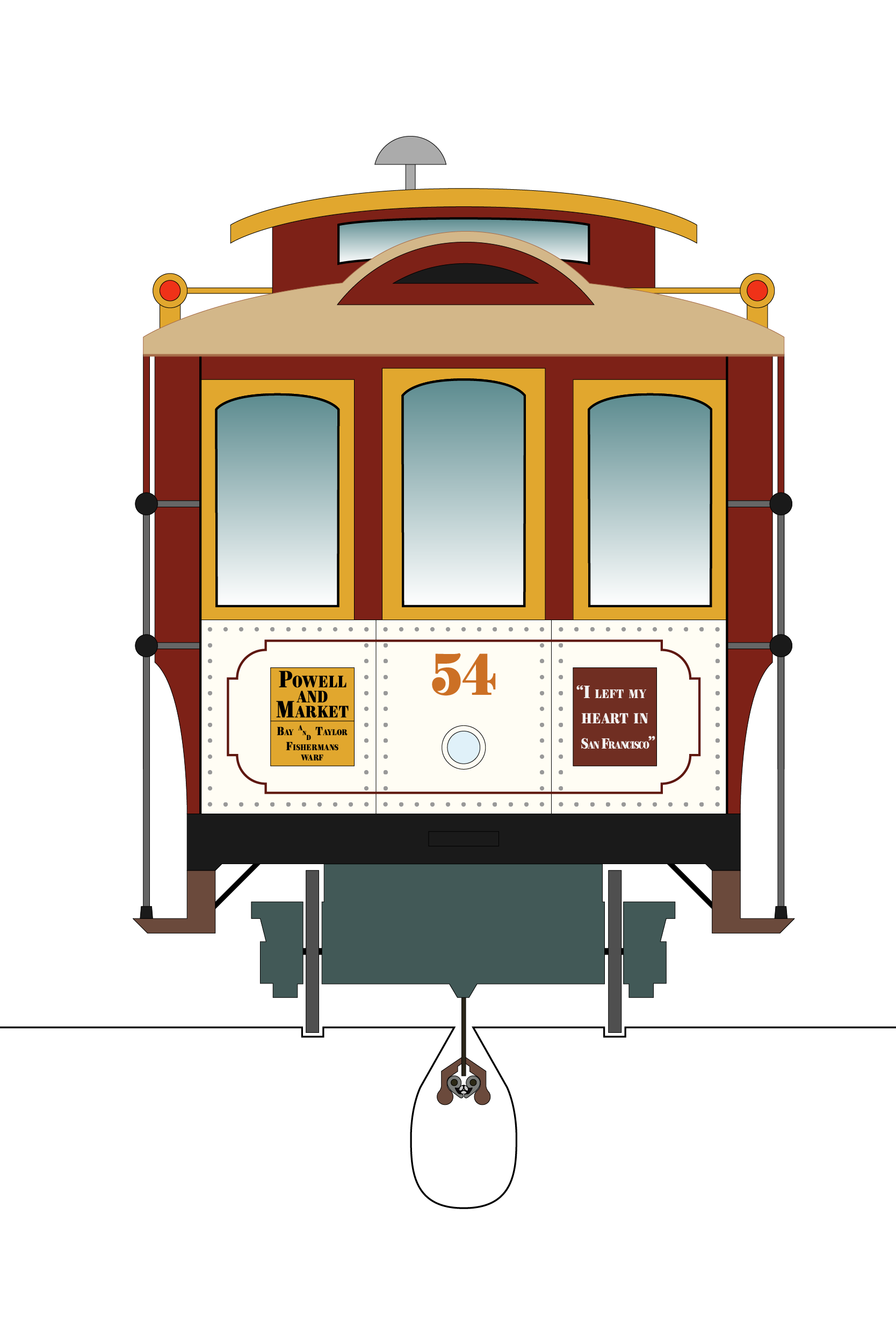 |
 |
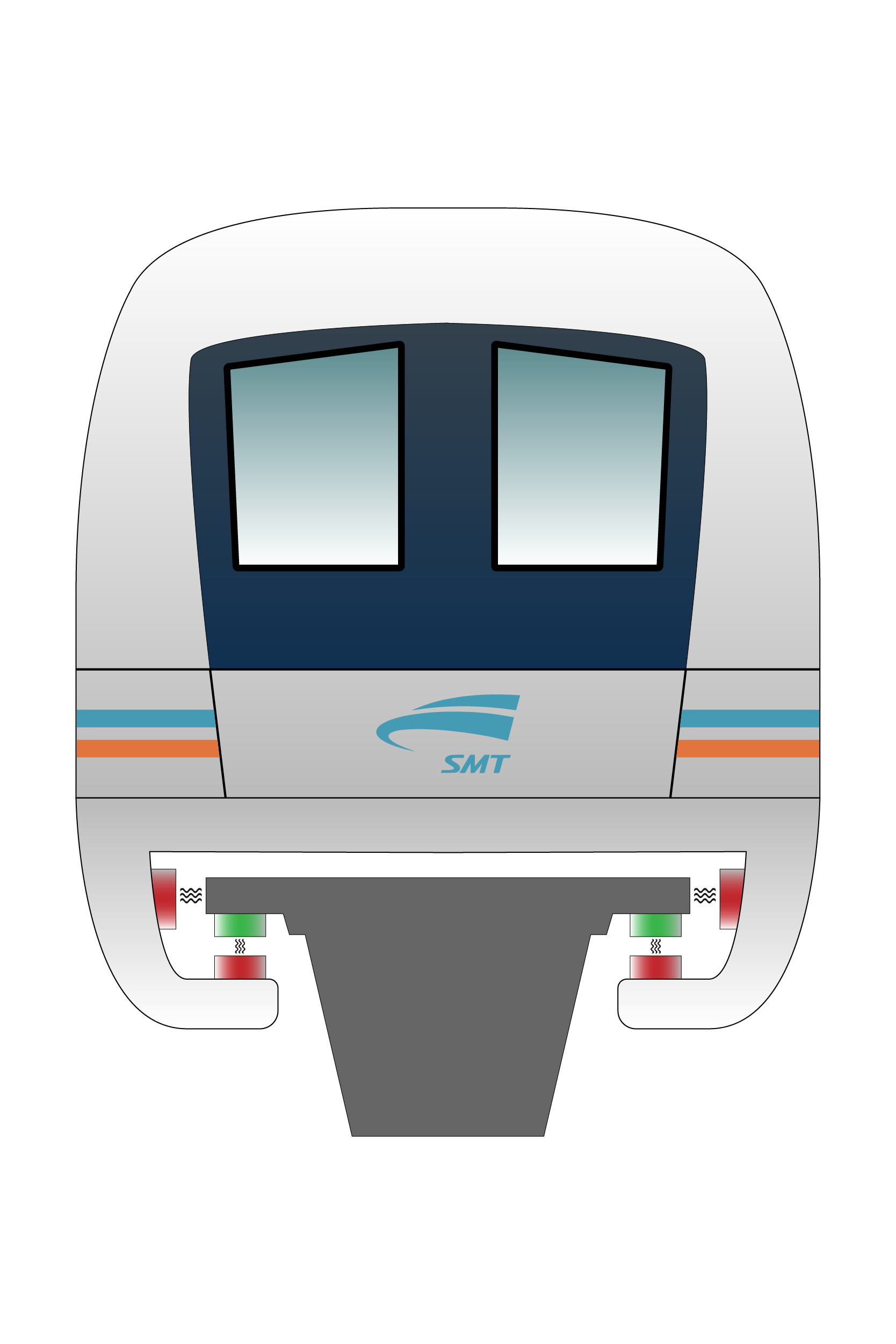 |
|
|---|---|---|---|---|---|---|
| Type of system | Monorail | Suspended monorail | Straddle monorail | Cable car | Rack railway | Maglev |
| Name | Schwebebahn | Siemens H-Bahn | Seattle Center Monorail | San Francisco Cable car | Middleton Railway | Shanghai Transrapid |
| Place | Wuppertal, Germany | Dortmund, Germany | Seattle, USA | San Francisco, USA | Middleton, UK | Shanghai, China |
| When was this system implemented? | 1901 | 1984 | 1962 | 1873 | 1812 | 2004 |
| Why was it implemented? | There was a need for large scale transport, and the space above the River Wupper was the only available, and thus a monorail was built above it. | To connect the north and south campuses of the University of Dortmund. | Used to transport guests of the 1962 World’s Fair. | The first cable car was introduced after Andrew Hallidie saw a horse-drawn streetcar slide backwards on wet cobblestone, killing the horses. | The rack railway was added when steam locomotives were introduced and more traction was needed to carry the heavy coal loads on the track. | Fast connection to transport passengers from the Shanghai Pudong International Airport to the city centre. |
| Advantages | It is elevated and thus does not interfere with other transport. | The suspension and propulsion system of the monorail is covered by the railway and thereby protected from the weather. | The narrow beams of the monorail cast a smaller shadow, and thus it is more pleasant for residents. | Used to make ascending and descending hilly areas of the city more easily. | Enables trains to climb steep hills of approximately 7 to 10%. | Fast transportation. |
| Disadvantages | Derailment of the monorail can occur more easily, although only one fatal accident has happened. | Turnouts and junctions are costly to built and operate. | Requires special accommodation for disembarking passengers during an emergency. | Transport relies heavily on skilled gripmen. | Only suitable for long distances and expensive to built. | |
| Why is this system still relevant today? | Still used by 24 million passengers each year to travel between Oberbarmen and Vohwinkel. | Although often not used by locals, it is a major tourist attraction in San Francisco. | Rack railways are still used to travel along steep grades to provide extra traction. | Fastest rail transportation method in the world. |
In 1821 Henry Robinson Palmer was the first man to patent an elevated railway. It was a monorail suspended on 2 wheels above a cable with a carriage hanging on either side of the cable. The carriage was pulled forward by a connected rope between the carriage and horses. When Palmer presented his study, he wrote:
“In order to retain a perfectly smooth and hard surface, unencumbered with extraneous obstacles to which the rails near the ground are exposed, it appeared desirable to elevate the surface from the reach of those obstacles and at the same time be released from the impediments occasioned by snows in the winter season.”
Source quote: Palmer, H. R. (1823). Description of a Railway on a New Principle. London: J. Taylor. pp. 1, 2, 33-35
Image on the right: Henry Palmer’s elevated railway pattern
Although monorails are not towed by horses anymore, the monorail still has some resemblance of his design, especially the Wuppertal Schwebebahn which is called the ‘only real’ monorail. However, the term monorail has been broadened and is nowadays defined as a “single rail serving as a track for passenger or freight vehicles. In most cases rail is elevated, but monorails can also run at grade, below grade or in subway tunnels. Vehicles are either suspended from or straddle a narrow guideway. Monorail vehicles are wider than the guideway that supports them.”
As monorails are often elevated, they do not interfere with other traffic flows and does not have to deal with intersections, traffic jams, red lights and such, giving them an advantage over for example trams and busses. Likewise, it makes them safer, as the only collisions that can occur are those with other vehicles on the same track. Furthermore, these elevated tracks can often be built above existing roads or rivers making it an excellent solution in busy cities.
There are three basic types of monorails used in the world. The so called ‘only true’ monorail, the Schwebebahn in Wuppertal, Germany, the suspended monorail and the straddle monorail. In the next section, each monorail is described in more detail.
6.2.2 Schwebebahn Monorail
 The Schwebebahn is the ‘only true’ monorail in the world riding in Wuppertal, Germany since 1901. It is a suspension railway riding 12 meters above and along the Wupper River for 13.3 kilometers transporting nowadays almost 24 million passengers per year. The monorail was built above the river Wupper when a need for a large scale transportation system arose, but a lack of space was present in the area. So it was decided to use the space above the river to create the Schwebebahn monorail.
The Schwebebahn is the ‘only true’ monorail in the world riding in Wuppertal, Germany since 1901. It is a suspension railway riding 12 meters above and along the Wupper River for 13.3 kilometers transporting nowadays almost 24 million passengers per year. The monorail was built above the river Wupper when a need for a large scale transportation system arose, but a lack of space was present in the area. So it was decided to use the space above the river to create the Schwebebahn monorail.
Picture: Original Keiserwagen of the Schwebebahn in Wuppertal
The train cars run on two dual wheeled bogies, which carry both the load and propulsion of the train car. The double flanged steel wheels run on a single steel rail powered by a single motor. This system was developed by Carl Eugene Langen. The flanged wheels are what keep the vehicles on track. However, by only having one wheel, the monorail is more prone to derailment. Although this only happened once during the existence of the Wuppertal Monorail, it caused a fatal accident in 1999, when one of the maintenance workers left an instrument attached to the rail, causing the vehicle to fall off its track and plunge into the river below.
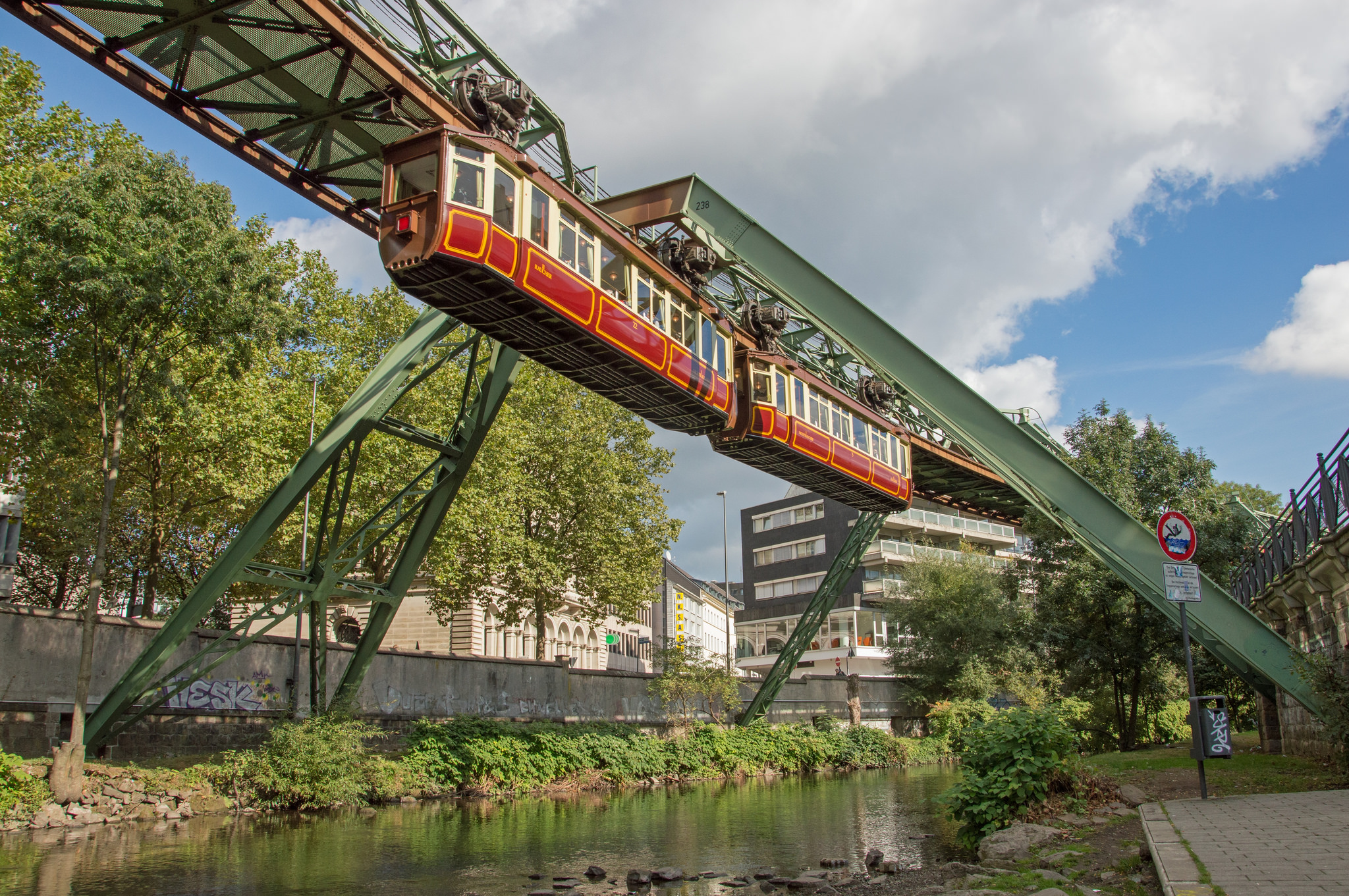
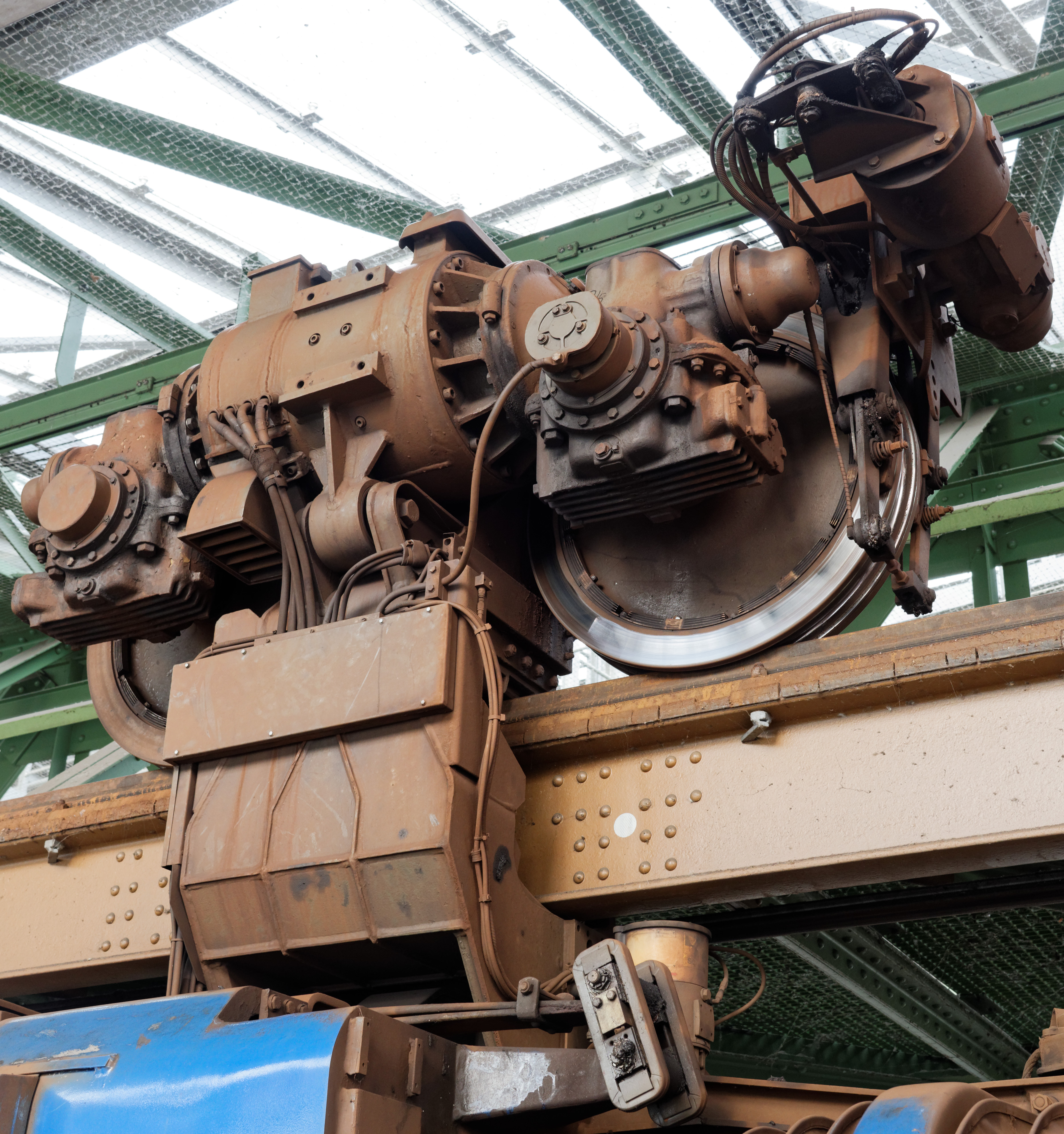
Left: Keiserwagen Schwebebahn (picture by Rob Dammers)
Right: Suspension of Schwebebahn monorail (picture by Matthias Böhm)
Elephant jumps out of monorail
6.2.3 Special Systems
Suspended Monorail
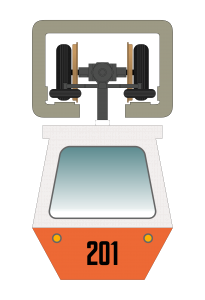 Although the Schwebebahn and suspended monorails hang beneath their tracks, both have very different suspension mechanisms. As mentioned before the Schwebebahn has a steel wheel rolling along a steel track whereby the double flanged wheels guide them along the track. Suspended monorails, however, often have multiple bogies with rubber wheels that drive inside concrete beam boxes. The vertical oriented wheels drive on the lower face of the hollow box and are used to suspend the monorail, while the horizontally orientated wheels provide guidance and stability along the track. The vehicles can reach up to 60 km/h, while keeping noise levels very low due to the rubber tires. The enclosed hollow box, however, has its advantages and disadvantages. It keeps the bogies protected from any weather conditions, whether it is rain, snow or frost, but it makes turnouts and junctions costly to built and operate. This makes maintenance to the bogies more difficult.
Although the Schwebebahn and suspended monorails hang beneath their tracks, both have very different suspension mechanisms. As mentioned before the Schwebebahn has a steel wheel rolling along a steel track whereby the double flanged wheels guide them along the track. Suspended monorails, however, often have multiple bogies with rubber wheels that drive inside concrete beam boxes. The vertical oriented wheels drive on the lower face of the hollow box and are used to suspend the monorail, while the horizontally orientated wheels provide guidance and stability along the track. The vehicles can reach up to 60 km/h, while keeping noise levels very low due to the rubber tires. The enclosed hollow box, however, has its advantages and disadvantages. It keeps the bogies protected from any weather conditions, whether it is rain, snow or frost, but it makes turnouts and junctions costly to built and operate. This makes maintenance to the bogies more difficult.
Picture on the right: Suspended monorail
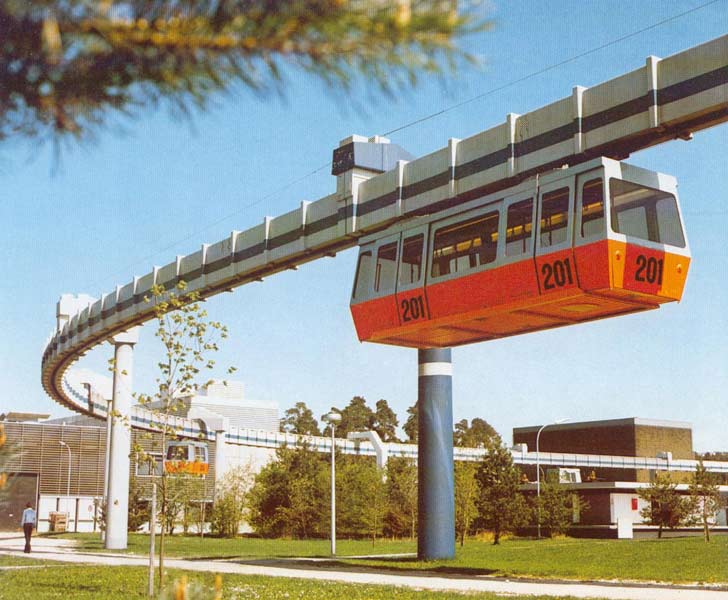 One example of a suspended monorail is the Siemens H-Bahn in Dortmund, Germany, used to connect the north and south campuses of the University of Dortmund. This monorail made use of SAFAGE’s system, where a bogie from the Paris metro was converted to suspend vehicles from a track, thus making it an aerial railway. The railway service began in 1984, only covering 1.05 kilometers with 2 trains. Later the track was expanded and now consists of 3.16 kilometers of track.
One example of a suspended monorail is the Siemens H-Bahn in Dortmund, Germany, used to connect the north and south campuses of the University of Dortmund. This monorail made use of SAFAGE’s system, where a bogie from the Paris metro was converted to suspend vehicles from a track, thus making it an aerial railway. The railway service began in 1984, only covering 1.05 kilometers with 2 trains. Later the track was expanded and now consists of 3.16 kilometers of track.
6.2.4 Straddle Monorail
In postwar Germany, a Swedish industrialist, Axel Lennart Wenner-Gren, had a lot of money and decided to invest it in a new type of monorail: the straddle monorail. This type of monorail did not hang underneath its track, but straddled the top of it. The ALWEG-style monorails have bogies that are used with rubber wheels, where the top wheels carry the load of the vehicles and provide propulsion and the horizontal wheels provide guidance and stability.
One example of a straddle monorail is the Seattle monorail. This track was developed to transport passengers to and from the World Fair in 1962, and was later bought by the city of Seattle. The track is only 1.54 kilometers long and has 2 vehicles driving up and down their own tracks. It connects the Seattle Center with the Westlake Center, transporting around 2 million passengers each year.
Picture: Illustration of a straddle monorail
As each vehicle travels along its own route, you would think that no accidents could happen. However, after the space between the tracks had to be reduced to make room for the Westlake Center, insufficient room was left for two vehicles pass each other, resulting in a collision in 2005.
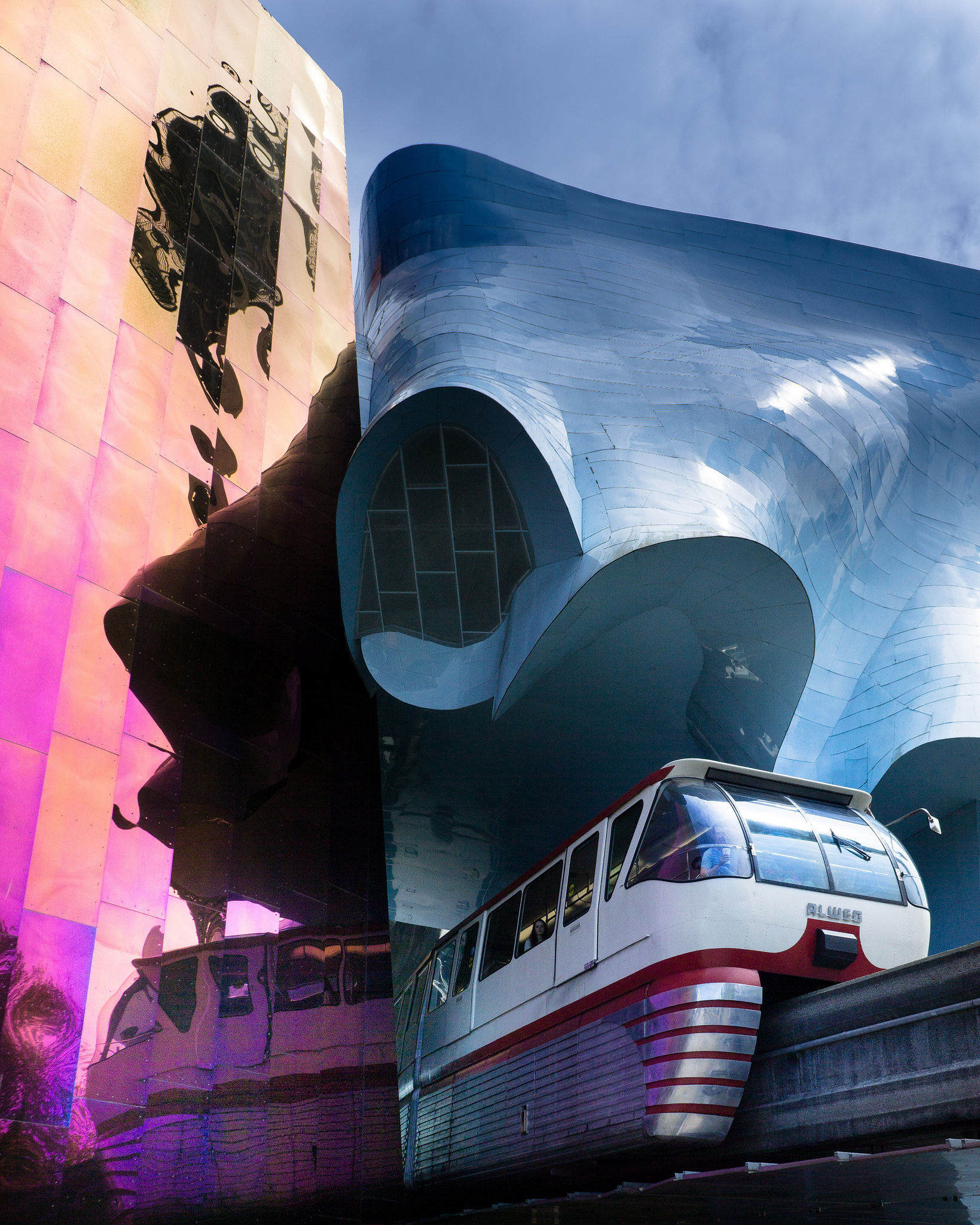
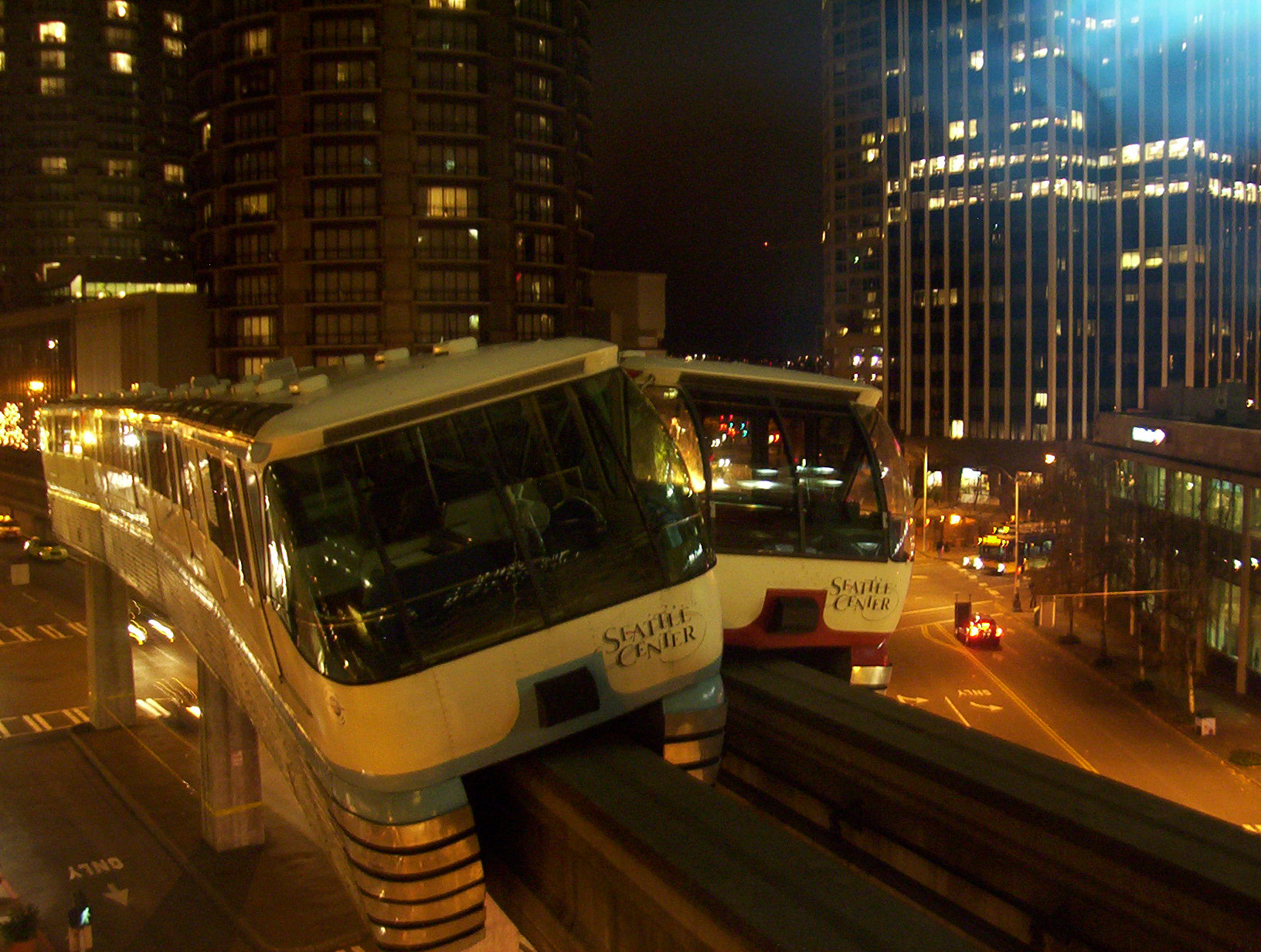
Left: Seattle Monorail leaving the museum of pop culture (picture by Steve Ginn)
Right: Seattle Monorail accident (picture by Garrett Fitzgerald)
6.2.5 Cable Car
The cable car as it is used in San Francisco is a kind in itself. Unlike most known cable cars, which hang beneath a cable traveling up a mountain, the San Francisco cable car drives down the streets together with other automobiles. Originally the system has been used in many cities around the United States, but also some other countries like the UK and Australia. Most cable cars however got replaced by electric trams in the first half of the 20th century. Of the original 23 lines established in San Francisco between 1873 and 1890 only 3 are still operational, and are mostly used by tourist to travel around the city.
The cable cars are pulled by a cable running just underneath the city floor, held by a grip, which grips the cable to move forward. The cable is powered by a power house where it is kept running at a constant speed of 15.3 km/h. A ‘gripman’, whose skills are heavily relied upon, uses the grip to hold onto the cable and to move forward, both on level ground as well as up and down a hill. S/he then releases the cable to be able to break for passing traffic in front of them. The gripman needs to perform different tasks depending on the situation the car is in.
Picture: San Francisco Cable Car


Picture: Grip mechanism cable car (shown closed without cable) (picture by HaeB)
Picture: San Francisco cable car (picture by Garrett Fitzgerald)
In the image below, the gripman would perform a partial release. During passenger and other stops, the grip is opened up slightly so that the cable is still inside the grip but slides freely so the car does not move. This allows for stops without the grip man having to pick up the cable each and every time.

Partial release of the cable
Next, the cable car needs to pick up speed to travel forward. As the grip level is pulled back, the grip clutches the cable, accelerating the car up to its maximum speed (see second and third image). The acceleration is a smooth process as the cable is lubricated with pine tar that evaporates under the heat and pressure of the grip, giving a metal to metal contact that allows for a strong grip.
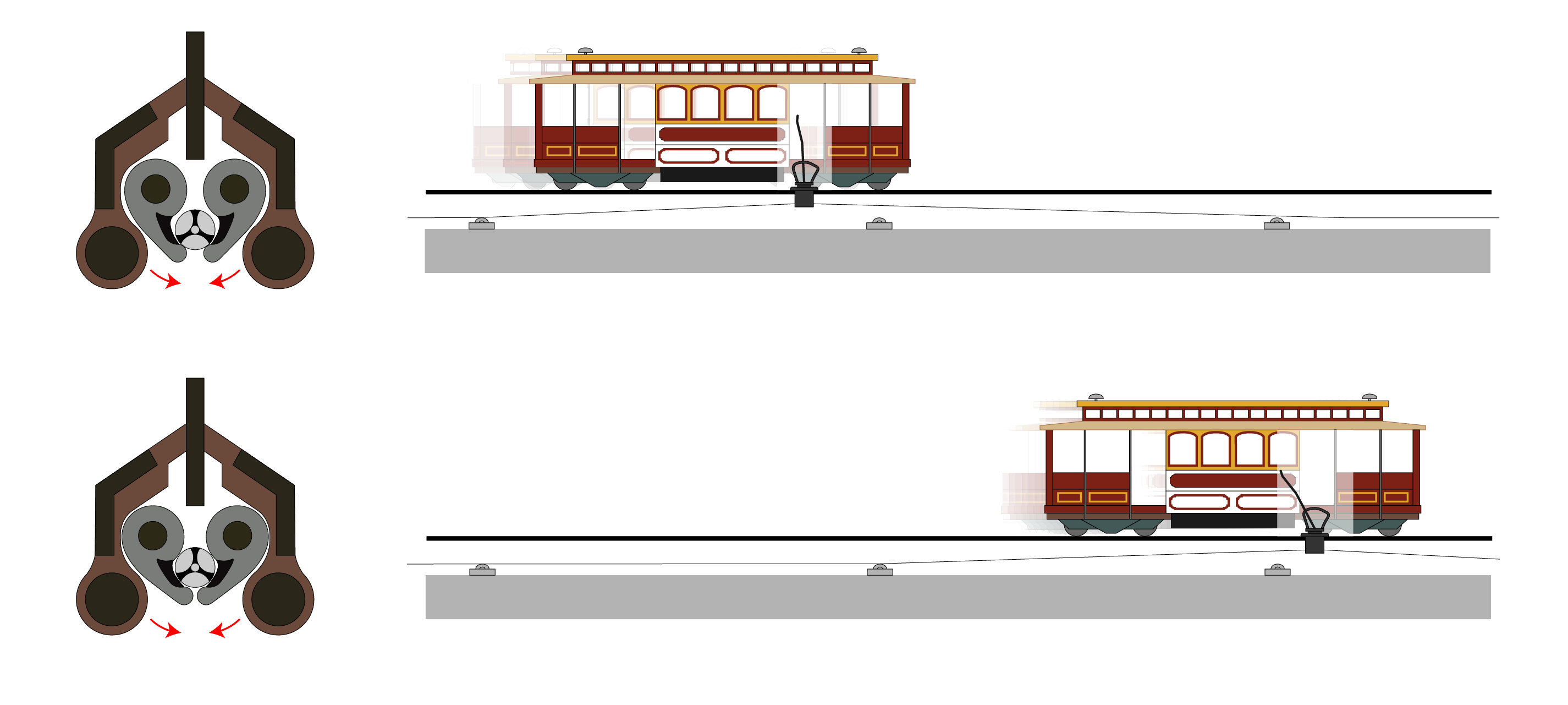
Accelerating up to maximum speed
Lastly, sometimes it is necessary to drop the cable out of the grip completely. This is done by fully opening the jaws. This is necessary for cable crossings, switches, particular curves and at the end of a line.

Full release
6.2.6 Rack Railway
A rack railway is often an addition to (parts of) a normal adhesion track to create more grip in portions of the rail where that is deemed necessary. The rack railway is a toothed rack rail usually situated in between the two normal tracks where a train fitted with a cog wheel is running on. Most rack railways are used in mountains to overcome steep grades.
The first rack railway was the Middleton Railway that travelled between Middleton and Leeds to transport coal. The rack railway was introduced in 1812, although the normal Middleton Railway was already running from 1758 (so without a rack railway). John Blenkinsop, inventor of the Blenkinsop rack railway, decided that in order to use a steam engine light enough not to break the track, the iron track would not provide sufficient adhesion, and thus the rack railway was added. On one side of the track, a toothed rail would be placed, and a new train with a pinion would be developed to ride on this track. The first commercially successful steam locomotive was built and called the “Salamanca”.
Picture: Illustration of a train on a rack railway
Rack railway with both a normal adhesion wheel and a pinion
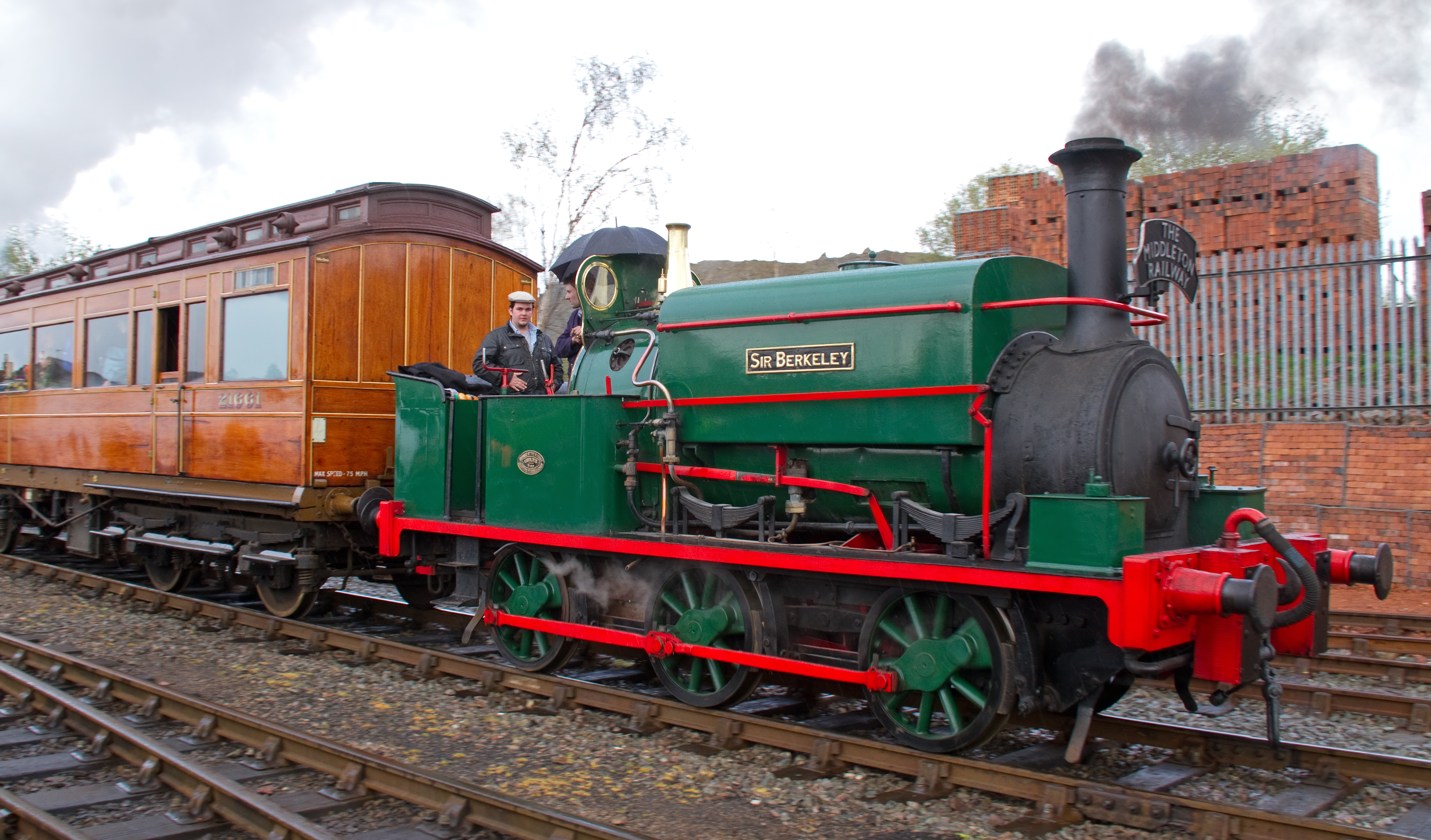
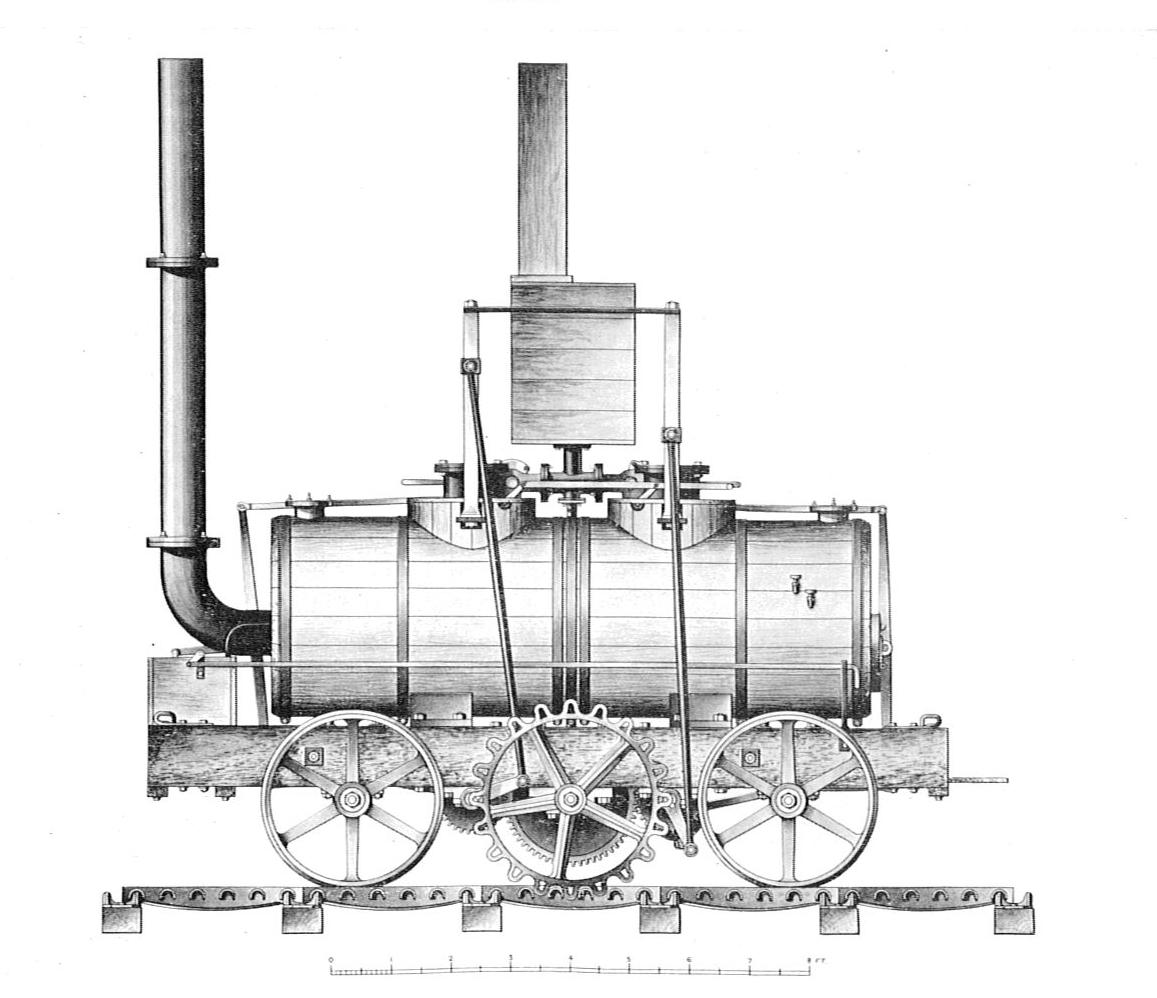
Picture: Sir Berkeley train on the Middleton Railway (picture by Tony Hisgett)
Picture: Blenkinsop’s rack locomotive Salamanca
After Blenkinsop, another eight people developed similar but different rack railway systems: Marsh, Riggenbach, Strub, Morgan, Abt, Von Roll, Fell, and Locher. The rack system of Locher was then used to create the steepest mountain railway in the world: the Pilatus Railway in Switzerland. It has a maximum gradient of 48% with an average of 35%.
6.2.7 Maglev
As one of the more recent innovations, the magnetic levitation (maglev) train is one of the fastest modes of rail transportation in the world as rolling resistance is eliminated thereby also making it much more quiet than conventional track and trains. The Transrapid in Shanghai is one of those maglev trains. This train is used to transport passengers from the Shanghai Pudong International Airport towards the city center by riding without wheels. This type of transport is guided, levitated and propulsed by magnetic field forces.
Picture: Illustration magnetic levitation train
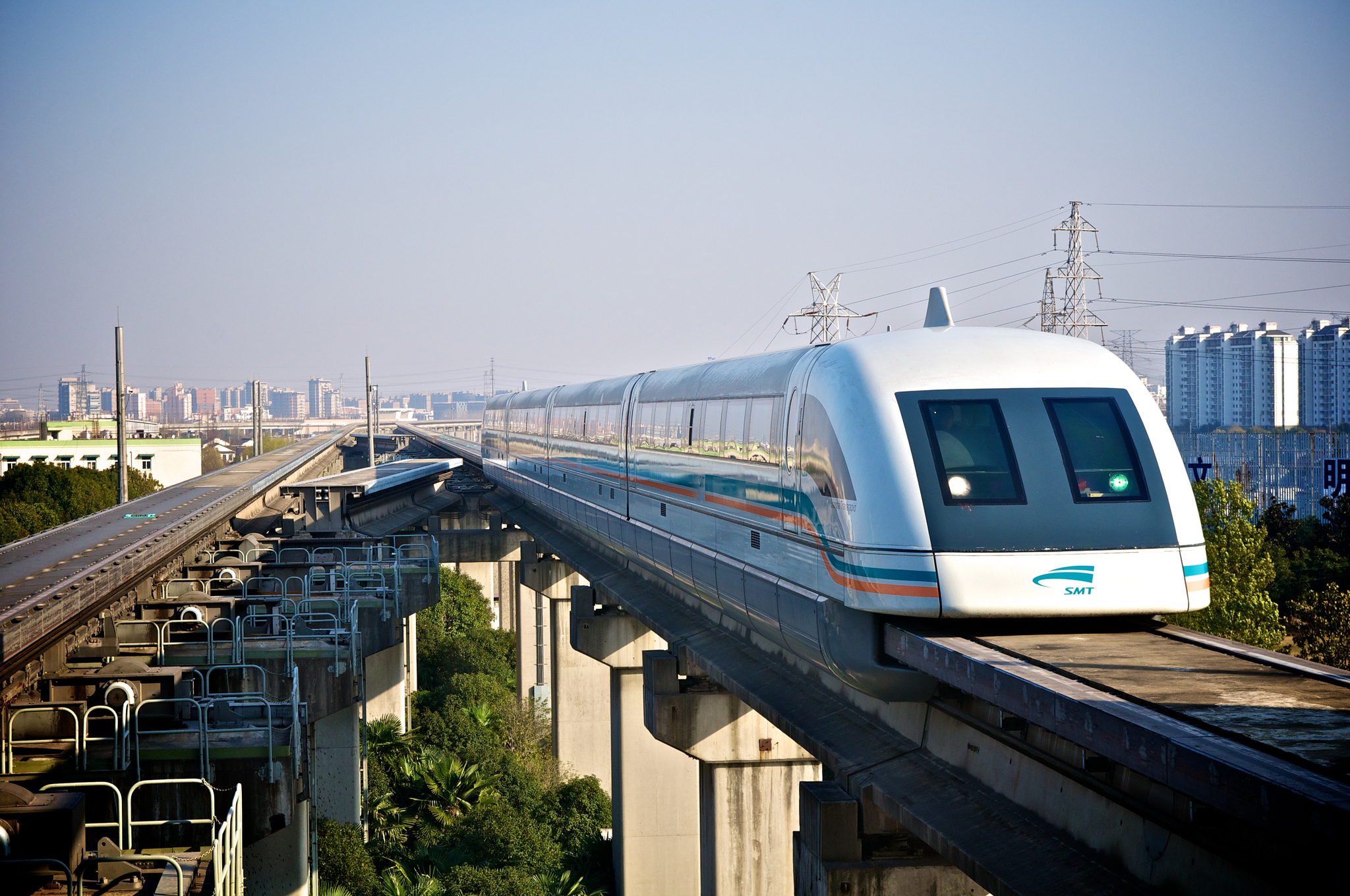
Transrapid Shanghai (picture by Max Talbot-Minkin)
There are three types of magnetic levitation of which the Transrapid makes use of the electromagnetic levitation system. Each system differentiates itself by using one or more different techniques in propulsion, levitation or guidance.
 Left: Permanent magnetic system. Middle: Electromagnetic system. Right: Electrodynamic system.
Left: Permanent magnetic system. Middle: Electromagnetic system. Right: Electrodynamic system.
Permanent magnetic system (repulsive):
This technique depends on permanent magnets in the train and in the guideway with a repulsive power that creates enough force to support the train. A linear motor creates propulsion to push the train forward while the train is guided by either guiding magnets or guiding rollers. After operational tests this line was given up already in 1972/1973 as not an economic solution for faster transport.
The other two maglev systems are currently being used or tested. The electromagnetic system is being used in the German Transrapid system (Shanghai maglev) while the electrodynamic system is being tested in the Japanese SC maglev trains. Both systems use magnets on the side of the track to guide the vehicles.
Electromagnetic system (attractive) (EMS)
Levitation: Magnetic levitation in the EMS system is achieved by using iron core electromagnetic that attract the ferromagnetic rail. These magnets need to overcome gravitational forces and thereby levitating the train. The distance between these magnets needs to be monitored carefully. This distance is usually 10 mm giving a distance between the train and the guideway of 15 mm. A complex electronic feedback system to keep the same distance ensuring that the train keeps levitating.
Picture: Close up of levitation system EMS
Propulsion: The same electromagnets used to levitate the train have alternating currents that create attractive and repulsive forces resulting in forward movement.

Propulsion mechanism of EMS and EDS maglev trains
Electrodynamic system (repulsive) (EDS)
Levitation: Support is given by means of on board superconductive magnets which induce eddy currents in the metallic conductors in the rail, which cause slight repulsive forces that create enough levitation. The levitation distance is naturally controlled, meaning that if there is too much repulsive force, the distance between the track and the train increases, reducing the repulsive force, and so a continuous loop is created.
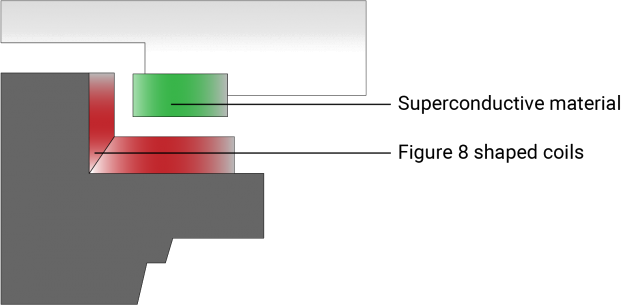
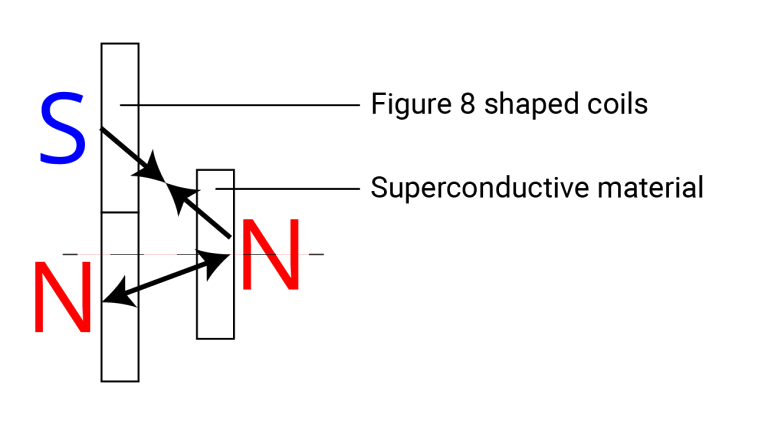
Left & right: Close up of levitation system EDS
Propulsion: The maglev is propulsed in a similar way as an EMS maglev is. However, this system has 8 shaped coils in the side of the track where these coils provide a 3 phase alternating current that propels the vehicle forward.
Support and guidance forces are however only sufficient from a minimum speed of 100 km/hour and upwards, and therefore there is a need for another propulsion method to reach this speed.
Both systems, EMS and EDS, have its advantages and disadvantages (shown in the table below) so therefore transportation organisations might choose for the one or the other to use in their maglev trains and tracks. In this paper a more in dept review is given about different Maglev systems.
| EMS | EDS | |
|---|---|---|
| Advantages | No wheels needed | Large distance between track and train enables high speeds |
| Commercially available technology that can attain very high speeds | Heavy load capacity | |
| Disadvantages | Seperation between vehicle and track must be closely monitored | Magnetic shielding is necessary to counteract strong magnetic fields onboard the train that would make the train inaccessible for passengers with pacemakers or magnetic data storage media such as hard drives and credit cards |
| Vibration issues may occur | Vehicles needs wheels for travel at low speed |

Railway Engineering: An Integral Approach by TU Delft OpenCourseWare is licensed under a Creative Commons Attribution-NonCommercial-ShareAlike 4.0 International License.
Based on a work at https://ocw.tudelft.nl/courses/railway-engineering-integral-approach/.






